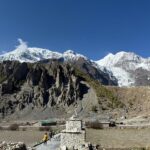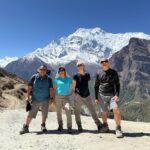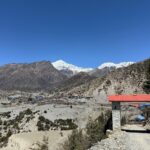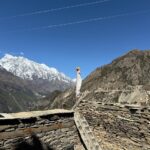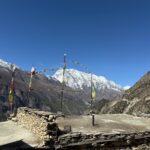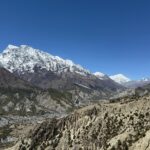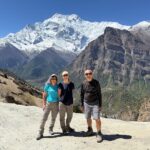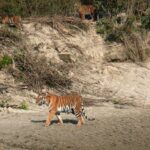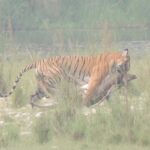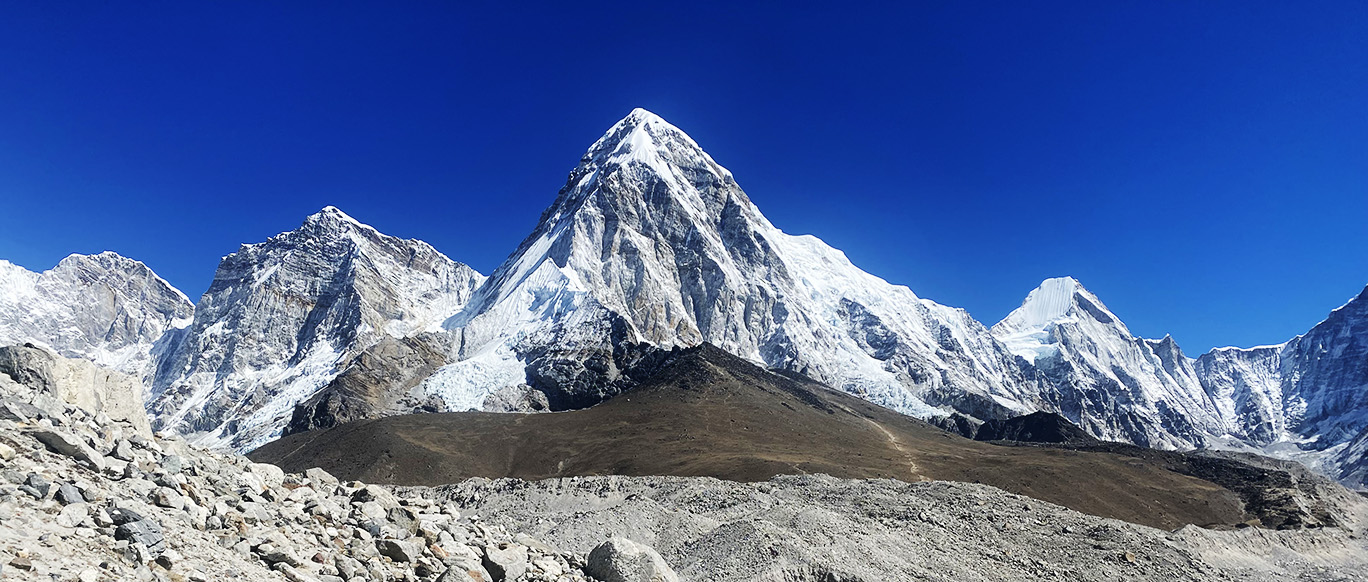
Everest Base Camp Trek Guide
Everest Base Camp Trek Guide –Everest Base Camp Trek in Nepal is one of the most popular places in the world for adventure trekking. The Everest Base Camp trek is centered around Mount Everest, which at 8,848.68 meters is the highest mountain in the world. This naturally adrenaline-fueled trip will take you through beautiful highland landscapes, temples, traditional Sherpa culture and more. highland animals and mountains covered with snow Everest is the only place where you can see the majestic peaks in all their glory. The exciting journey to Everest Base Camp is also famous across the world for its beautiful trails and views. The nature of this area brings special happiness to your heart.
“Mountains are the beginning and the end of all natural scenery.”
By John Ruskin
Everest Base Camp Trek Highlights
- Stunning Mountain Views.
- Phenomenal Everest views from Syangboche, the world’s highest airport (3,780m / 12,400ft).
- Possibility to investigate the culture and way of life of the local Sherpa people.
- The awe-inspiring vistas of the world’s tallest mountain, 8,848.68 meters/29,029 feet tall, are breathtaking.
- Mt. Lhotse (8,516m), Cho Oyu (8,201m), and Mount. Makalu are also visible (8,463m).
- Experience Sagarmatha National Park’s prayer wheels, flags, Mani stones, and elevated suspension bridges.
- Extensive variety of flora and fauna.
- Tengboche’s (3,867 m / 12,4 ft) ancient monastery.
- Fauna such as musk deer, multicolored pheasants, snow leopards, and Himalayan Tahrs inhabit this region.
- Khumbu Glacier is the world’s highest glacier (4,900 m).
- Incredible panoramic views from the Kala Patthar (5,555m).
Why Everest Base Camp Trek
The famous Everest Base Camp Trek will take you through the Khumbu Valley with a vista of beautiful Sagarmatha National Park and breathtaking views of 4 out of 6 highest peaks in the world: Mt. Everest at 8,848 meters, Mt. Lhotse at 8,516 meters, Mt. Makalu at 8,470 meters, and Cho Oyu at 7,516 meters.
Classic Trek in the footsteps of Sir Edmund Hillary, Tenzing Norgay, and many early explorers of Mt. Everest, you will walk from Lukla to Base Camp; stay in a few of the highest villages in the world; learn about local Sherpa culture and traditions by finding out about their spiritual connection to the mountains.
This trek also takes you up the top of Kala Patthar, 5,500m high, wherein lie views of Mount Everest that are simply astounding. You also will visit the Buddhist monasteries lining your routes and come across such a culture-so steep in history and tradition, steeped with the mountains from which you get some of the most amazing views.
Everest Base Camp Trek- best time to go
Although the Everest region is accessible year-round, the clearest skies and most pleasant temperatures are found during the spring-March to May-and fall-late September to early November-seasons. Winters, late November to February, are very cold-particularly above Namche Bazaar-while summers are cloudy with a chance of delayed flights out of Lukla from late June to early September.
However, these off-seasons afford a really great opportunity to have a more unique Everest Base Camp expedition. Even in the middle of the monsoon, the sky above Namche Bazaar often clears. In the winter, the number of people on the trail would be comparative few, and villages and valley will be dusted in snow. Teahouses will be more available and friendlier now, too, and you’ll have more time to get to know the locals – although a lot of them will have gone to Kathmandu for the winter.
If you like to observe Everest expeditions in action and to view their base camps, you should visit their base camps. Spring is the best time to travel. Dozens of expedition groups swell the population of camps at Base Camp. You might not feel the tranquility of nature; however, it is fascinating to rub elbows with aspiring Everest summiteers.
Everest Base Camp trek – A Typical Day
We all meet in the teahouse dining room for breakfast at 6 or 7 am. We let the teahouse owner know our order for breakfast for the next morning the night prior, so he can have it ready upon our arrival to the teahouse. After breakfast, pack your duffel, that will be carried by a porter. He is on his schedule. Basically, you only need one daypack with things like water bottles, sunscreen, snacks, etc. that you might need during the day.
Then, you and your guide will start hiking. Your guide would have described you the best parts of the day on the previous night, so you would know the way. Keep walking until we reach the stop for lunch on the trail. Most likely, it would be at a small settlement. Have lunch and then keep on the trail until you reach the teahouse for night staging.
At the teahouse, you will now need to select your choice of dinner from the menu and then go off to spend time with other travelers or writing in your journal. The guide will explain the next day’s route and scenery during or after dinner. You will want to remember to order breakfast before retiring to bed.
Everest Base Camp Trek Difficulty
The Everest Base Camp Trek is one of the most famous treks in the world for vacation. A walk through Nepal’s breathtaking Khumbu region into the land of the world’s highest peaks is an adventure of a lifetime that everyone should-and can-do at least once. Even though no climbing skills are needed, you do need to be physically fit and determined for this iconic trek.
Anticipate uneven terrain, plenty of stairs, steep uphill and downstairs, and unpredictable weather. Activity will generally not exceed eight hours per day, but stamina, confidence, and consistency are more important. Trekking to Everest Base Camp is possible on an enthusiastic, relatively fit hiker level of a person who enjoys the mountains or simply looking forward to an amazing adventure.
Everest Base Camp Trekking Permit
Due to decentralization, a new permit system has been introduced in Everest Region. TIMS Card is no longer needed. This new local entry permit has replaced the old trek permit in Khumbu and also generated a lot of controversy and debate.
Khumbu Pasang Lhamu Rural Municipality Entrance Permit
This new permit replaced the old TIMS Card, which was taken away on October 1, 2018. The Khumbu local government collects NPR 2,000 from each foreigner in person. Note that you cannot get these permits in Kathmandu. First, this can be obtained in Lukla in case you are flying there. In the case of starting trekking from Jiri or Salleri, you will get this in Monjo.
Permit to Enter the Sagarmatha National Park
How to obtain a permit to enter a National Park: It is available at the Nepal Tourism Board Office in Kathmandu, or at the Park Entrance Gate in Monjo. The tariff per person is NPR 3000. The easiest way is to do it at Monjo. In Monjo, there is an office where different things are shown about the Khumbu Region.
Extra Permit for Trek from Jiri to Everest Base Camp
For the classic Jiri to Everest Base Camp Trek, you will also need an extra permit for the Gaurishankar Conservation Area. You can collect it at the Nepal Tourism Board in Kathmandu. You have to pay NPR 3000 per person.
Documents required to obtain the everest trekking permits
The Khumbu Pasang Lhamu Rural Municipality and Sagarmatha National Park Entry Permits need passport information. The Gaurishankar Conservation Area Project Entrance Permit requires two photographs, with the filling out of a short application form. These fees are payable only in local currency.
Everest Base Camp with Guide and Porter
People like guides and porters can make your trek to Everest Base Camp much easier. Guides will help you find your way, check on you, make sure you have food and water, pace you, and teach you about your surroundings, the culture, and the altitude.
Porters are people who will help carry your biggest bag, you will self-carry your day pack with water, snacks, gloves, extra layers and anything you think you’ll need. Everything else will go into this big bag. For the sake of the person carrying your bag, try to keep it under 15 kilos.
If you do hire a guide and a porter, make sure to tip them at the end of your trek. It is common to give your guide 15 percent of the total cost of your trek and your porter 10 percent.
Everest Base Camp Trek Food and water
This is yet another thing that can make this journey so much more difficult than it should be. With the “no-kill” policy for Sagarmatha National Park, all meat needs to be carried up from Lukla on the back of a porter, and you have no idea how long it has been out. There are lots of dried meat, although you will probably want to be cautious and maybe only eat meat on the way down.
There will need to be purification of water. Bring tablets or means of filtering the water. We highly recommend you pack some of your favorite candies. You would be surprised how a Twix or Snickers at the end of the day motivates you when you are hiking.
If you bring them, don’t give the kids candy or chocolate. Giving the kids candy, even the cute ones, only encourages begging, and this is seriously frowned upon by a lot of people in the area. And it’s less than ideal when dental care’s hard to come by. It would be great to give the villages such things as toothbrushes, pens, crayons, and notebooks.
Everest Base Camp Terrain
On a hike to Everest Base Camp, you will see a wide array of different terrain. Most walking will take place on trails or paths made of rocks. If your ankles are weak, get a pair of mid-rise hiking boots or wear an ankle brace. These last few days have been hard on the ankles because of the rocks near Gorak Shep. And just remember that just because you’re going up and down the whole way, it’s gonna be a lot more uphill on the way back than you remember, going up towards Tengboche and Namche Bazaar.
Training for Everest Base Camp Trek
Everest Base Camp training should include aerobic conditioning, altitude training, and strength endurance. Realistically, there is no way to simulate the extreme altitude of Everest Base Camp; however, aerobic training will train your body to work hard using minimal oxygen, while elevation training will strengthen your muscles to handle the ascent better.
To many, a very real perception of the trek to Everest Base Camp is akin to a marathon up the highest mountain in the world, some sort of physical challenge far beyond the reaches of mere mortals. The walk is challenging, but not quite as daunting as this. It requires the right mindset and attitude, a proper pace, and correct preparation, and young and senior trekkers alike are able to reach Everest Base Camp and have a beautiful experience en route.
Physical and mental preparation for a journey to Everest Base Camp should not be intimidating. You do not need to be a marathon runner or elite athlete to make the journey. However, practice and planning will make your journey a great deal more enjoyable.
Everest Base Camp Trekking options
Some of the best options for Everest base camp trek are here.
9 days Everest Base Camp Trek with Helicopter Return Itinerary
- Day 1: Fly to Lukla and trek to Phakding (2,652m/8699ft), 4-5 hours.
- Day 2: Trek to Namche Bazaar (3,440m/11,283ft), 5-6 hours.
- Day 3: Acclimatization day at Namche Bazaar and hike to Everest View Hotel (3,9880m), 4 hours.
- Day 4: Trek to Tengboche (38,60m/12,660ft), 5-6 hours.
- Day 5: Trek to Dingboche (4410m/14464ft), 4-5 hours.
- Day 6: Acclimatization day ad Dingboche.
- Day 7: Trek to Lobuche (4,910m/16,105ft), 5-6 hours.
- Day 8: Trek to Everest Base Camp (5,364m/17,594ft) and back to Gorekshep (5,181m/16,994ft), 8 hours.
- Day 9: Hike to Kalapattar (5545m/18188ft) – Gorekshep – Kathmandu by Helicopter.
10 days Everest Base Camp Itinerary
- Day 1: Scenic flight to Lukla and trek to Phakding (2,610m), 4-5 hours.
- Day 2: Trek from Phakding to Namche Bazaar (3,440m), 5-6 hours.
- Day 3: Acclimatization day at Namche Bazaar.
- Day 4: Trek from Namche to Pangboche (3,930), 5-6 hours.
- Day 5: Trek from Pangboche to Thukla (4,620m), 5-6 hours.
- Day 6: Trek from Thukla to Everest Base Camp (5,170m) and back to Gora Shep (5,180m), 6-7 hours.
- Day 7: Hike up to Kalapathar (5,550m) & trek to Pheriche (4,280m), 6-7 hours.
- Day 8: Trek from Pheriche to Namche Bazaar (3,440m), 6-7 hours.
- Day 9: Trek from Namche Bazaar to Lukla (2,860m), 6-7 hours.
- Day 10: Fly from Lukla to Kathmandu (1,350m).
11 days Everest Base Camp Itinerary
- Day 1: Fly from Kathmandu to Lukla (2850m) 40 minutes & trek to Phakding (2,650m), 4-5 hours.
- Day 2: Trek from Phakding to Namche Bazaar (3,440m), 5-6 hours.
- Day 3: Acclimatization at Namche Bazaar Hike to Everest View Hotel; Duration 34-5 hours.
- Day 4: Trek from Namche Bazaar to Tengboche (3,860m), 5-6 hours.
- Day 5: Trek from Tengboche to Dingboche (4,360m), 4-5 hours.
- Day 6: Trek from Dingboche to Lobuche (4,930m), 5-6 hours.
- Day 7: Trek from Lobuche to Gorakshep (5160m) & to Everest Base Camp (5360m) – return to Gorakshep;, 7-8 hours.
- Day 8: Hike to Kalapathar (5,550m) & return to Pheriche (4,280m), 6-7 hours.
- Day 9: Trek from Pheriche to Namche Bazaar (3,540m), 5-6 hours.
- Day 10: Trek from Namche Bazaar back to Lukla (2,860m), 6-7 hours.
- Day 11: Fly to Kathmandu from Lukla and transfer to hotel.
12 days Everest Base Camp Itinerary
- Day 1: Fly to Lukla and trek to Phakding (2610m).
- Day 2: Phakding to Namche Bazaar (3445m).
- Day 3: Acclimatization in Namche Bazaar (3445m).
- Day 4: Namche Bazaar to Tengboche (3867m).
- Day 5: Trek to Dingboche (4360m).
- Day 6: Day 08: Acclimatization in Dingboche (4360m.)
- Day 7: Day 09: Trek to Lobuche (4930m).
- Day 8: Trek to Gorakshep, Hike to Everest base camp & back to Gorakshep.
- Day 9: Trek to Kalapathar (5,643m) & back to Pheriche (4,371m).
- Day 10: Trek to Namche Bazaar.
- Day 11: Trek back to Lukla.
- Day 12: Fly to Kathmandu from Lukla and transfer to hotel.
13 days Everest Base Camp Itinerary
- Day 1: Fly to Lukla (2,804 m) and Trek to Phakding (2,610 m), 4-5 hours.
- Day 2: Trek to Namche Bazaar (3,441 m), 5-6 hours.
- Day 3: Acclimatization day at Namche Bazaar.
- Day 4: Trek to Dole (3,680 m), 5-6 hours.
- Day 5: Trek to Gokyo (4,790 m), 5-6 hours.
- Day 6: Trek to Gokyo Ri (5,483 m) and Back to Gokyo via Trek to Thangnak (4,500 m), 6-7 hours.
- Day 7: Cross Chola Pass (5,368m) and trek to Dzongla (4,830m), 6-9 hours.
- Day 8: Trek to Lobuche (4,910 m ), 4-5 hours.
- Day 9: Trek to Everest Base Camp (5,365 m) and then Back to Gorak Shep (5,180 m), 6-7 hours.
- Day 10: Hike Up to Kala Patthar (5,555 m) and Trek Down to Pheriche (4,300m), 6-7 hours.
- Day 11: Trek to Namche Bazaar (3,441 m), 6-7 hours.
- Day 12: Trek to Lukla (2,804 m), 6-7 hours.
- Day 13: Morning Flight from Lukla to Kathmandu.
15 days Everest Base Camp Itinerary
- Day 1: Fly to Lukla (2,850m/9,350 ft) 40 minutes, Trek to Phakding ( 2650 m/8562 ft ), 4-5 hours.
- Day 2: Trek from Phakding to Namche Bazaar (3,440m/11,285 ft), 5-6 hours.
- Day 3: Rest day and Acclimatization at Namche Bazaar.
- Day 4: Trek to Tengboche (3790m), 5-6 hours.
- Day 5: Trek to Dingboche (4,410m), 3-4 hours.
- Day 6: Day trip to Chhukung valley and back to Dingboche, 4-5 hours.
- Day 7: Trek to Lobuche (4950m), 5-6 hours.
- Day 8: Trek to Everest Base camp (5364m), back to Gorakshep (5,180m), 6-7 hours.
- Day 9: Early morning to Kalapather then trek to Dzonglha (4830m), 6-7 hours.
- Day 10: Cross the Chola pass (5420m) then trek down to Tagnag(4695m), 7-8 hours.
- Day 11: Trek to Gokyo (4800m) then visit fifth lake back to Gokyo, 3-4 hours.
- Day 12: Climb to Gokyo Ri (5360m) and trek down to Dole (4,200m), 5-6 hours.
- Day 13: Trek down to Namche (3,440m), 5-6 hours.
- Day 14: Namche Bazaar to Lukla (2,850m/9,350 ft) 6-7 hours.
- Day 15: Fly from Lukla to Kathmandu.
17 days Classic Everest Base Camp Itinerary
- Day 1: Fly to Lukla (2,850m/9,350 ft) 40 minutes, Trek to Phakding ( 2650 m/8562 ft ), 4 hours.
- Day 2: Trek from Phakding to Namche Bazaar (3,440m/11,285 ft), 5-6 hours.
- Day 3: Rest day at Namche Bazaar for acclimatization.
- Day 4: Namche Bazaar to Thame (3750m/12,303ft), 5-6 hours.
- Day 5: Thame to Lungden (4500m/14,764ft), 5-6 hours.
- Day 6: Lungden to Gokyo Lake (4750m) through Renjola Pass (5446m/17867ft)), 7-8 hours.
- Day 7: Rest day to Acclimatize at Gokyo.
- Day 8: Gokyo to Thangnak (4,700m/15,400ft) )Duration: 4-5 hours.
- Day 9: Thangnak to Dzongla (4,855m/15,930 ft) through Cho La Pass (5420m/17,783ft), 6-7 hours.
- Day 10: Dzongla to Lobuche (4,910m/16,175ft), 3-4 hours.
- Day 11: Lobuche to Everest Base Camp and back (5,364m/17,598ft)to Gorak shep (5,185m/17,010 ft) 6-8 hours.
- Day 12: Climb to Kala Patthar(5,55 5m/18,208ft) and trek to Lobuche (4,910m/16,175ft (4,250m/13,945ft) 5 hours.
- Day 13: Lobuche to Chhukung (4730m/15580 ft) Via Kongma La (5535m/18159ft), 7-8 hours.
- Day 14: Chhukung to Tengboche (3,855m/12,850ft), 4-5 hours.
- Day 15: Tengboche to Namche Bazaar (3,440m/11,285 ft), 4-5 hours.
- Day 16: Namche Bazaar to Lukla 2,850m/9,350 ft, 6-7 hours.
- Day 17: Fly back to Kathmandu.
18 days Classic Everest Base Camp Itinerary
- Day 1: Drive to Jiri & trek to Shivalaya (1,800m), 7-9 hours.
- Day 2: Trek from Shivalaya to Bhandar (2,190m), 5-6 hours.
- Day 3: Trek from Bhandar to Sete (2,575m), 6-7 hours.
- Day 4: Trek from Sete to Junbesi (2,700m), 6-7 hours.
- Day 5: Trek from Junbesi to Trakshindu (2,930m), 5-6 hours.
- Day 6: Trek from Trakshindu to Paiya (2,730m), 5-6 hours.
- Day 7: Trek from Puiyan to Phakding (2,600m), 5-6 hours.
- Day 8: Trek from Phakding to Namche Bazaar (3,445m), 5-6 hours.
- Day 9: Acclimatization at Namche Bazaar (3,440m)
- Day 10: Namche Bazaar to Tengboche (3,860m), 5-6 hours.
- Day 11: Trek from Tengboche to Dingboche (4,360m), 4-5 hours.
- Day 12: Acclimatization at Dingboche & trek to Chhukung (4,360m), 4-5 hours.
- Day 13: Trek from Dingboche to Lobuche (4,930m), 5-6hours.
- Day 14: Trek from Lobuche to Gorakshep (5160m) & Everest Base Camp (5360m) – return to Gorakshep:, 6-7 hours.
- Day 15: Hike to Kalapathar (5550m) & trek to Pangboche (3,985m), 7-8 hours.
- Day 16: Trek from Pangboche to Namche Bazaar (3,440m), 5-6 hours.
- Day 17: Trek from Namche to Lukla (2,860m), 6-7 hours.
- Day 18: Fly from Lukla to Kathmandu.
Insurance for Everest Base Camp Trek
If you are going on a hike or if the travel is at a high altitude, then travel insurance is a must. This is one of the most significant things you need for trekking in Nepal’s high mountains. EBC trek is a high altitude trek, and such treks may be a bit hazardous. These plans for travel insurance might be one of the best choices if travelers have any issues while trekking. The insurance saves you from paying a huge amount at one time, so we suggest all the travelers going for trekking or any other activities to Nepal avail of the travel insurance policies. Also, your insurance policy should cover emergency helicopter evacuation, medical expense, and altitude up to 6,000 meters.
Everest Base Camp Trek Packing List
The right clothes, gear, and consumables will go a long, long way to making certain that your trek to Everest Base Camp is nothing less than spectacular. Packing for Everest Base Camp Remember that your luggage will be divided into two while packing for Everest Base Camp: your daypack, which you will carry with yourself every day, and your duffle bag, which the porters will carry between the tea houses. Additional luggage can be left at the hotel prior to embarking on the hike.
The list contains all that needs to be brought to the Everest Base Camp. This tells one what layers to bring about in the changeable weather in the Himalayas, what one needs to make their trek smooth and comfortable, and just what to bring to have a great time.
Clothing
- Moisture-wicking long-sleeve t-shirts (2)
- Moisture-wicking short-sleeve t-shirt (1)
- Heavy fleece or down jacket
- Gortex or waterproof jacket with hood
- Windbreaker
- Rain poncho
- Fleece pants
- Trekking pants (2)
- Hiking shorts (1)
- Waterproof pants
- Hiking socks (10)
- Warm thermal socks (1)
- Long underwear (2)
- Underwear (10)
- Hiking boots with ankle support
- Camp shoes or tennis shoes
- Light inner gloves/glove liners
- Insulated wool or down mittens/gloves
- Sunglasses
- Broad-brimmed hat
- Neck gaiter or bandana (for sun protection)
- Wool hat or balaclava (should cover ears)
- Gaiters (needed Dec-Feb)
- Sweatshirt (optional)
- Sock liners (optional)
Trekking Gear & Supplies
- 40L Daypack for carrying what you need on the trail
- Waterproof cover for daypack
- Water bottles or hydration bladder
- Sleeping bag rated to -18°C/ 0°F
- Trekking poles
- Headlamp with extra batteries
- Lightweight water filter or iodine water tablets (personal preference)
- Hand warmers
- Travel pillow or pillowcase
- Sleeping bag stuff sack
- Drybags in several sizes
- Stuff sacks for dirty clothes/shoes
- Camera with extra batteries and memory cards
- Small lock(s) for duffle bag and daypack
- Sleeping bag liner (optional)
- Quick-drying trekking towel (optional)
Toiletries
- Sunscreen
- Lip balm with sunscreen
- Toilet Paper
- Moleskin, medical tape, and/or duct tape for treating/preventing blisters
- Advil or Ibuprofen
- Diamox (for altitude sickness)
- Personal prescriptions
- Antibiotics (Cipro for travelers’ diarrhea)
- Anti-chafe balm (e.g. Body Glide, to prevent chafing)
- Diaper rash cream (Can treat rashes or chaffing)
- Soap
- Deodorant
- Toothbrush/toothpaste
- Razor (as needed)
- Shampoo
- Wet wipes
- Hand sanitizer
- Feminine hygiene products (as needed)
- Face lotion
- Hairbrush
- Hair ties
- Earplugs (for sleeping)

